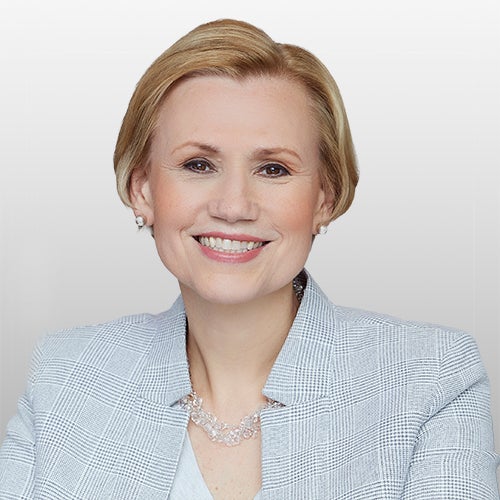Midyear outlook: Anticipating a brief, shallow economic slowdown

Key takeaways
Bumpy landing
Our base case anticipates a relatively brief and shallow economic slowdown as inflation continues to moderate and monetary policy tightening nears an end.
Hard landing
We could potentially see a “hard landing,” starting with a recession in the US that would cascade into other economies.
Smooth landing
There is also the possibility of a “smooth landing” in which monetary policy impacts growth less than expected and the global economy is relatively unscathed.
As we enter the back half of this year, it’s time to share our midyear outlook. We continue to live in extraordinary times as many developed economy central banks continue to focus their efforts on curtailing the worst inflation experienced in decades. This has helped exert downward pressure on inflation but has also brought about a meaningful slowdown in global growth and some financial accidents, including several US regional bank failures. However, against this backdrop, we see some resilience in many economies, especially in services.
Base case scenario: Bumpy landing
Our base case anticipates a relatively brief and shallow economic slowdown as inflation continues to moderate and monetary policy tightening nears an end.
United States
We continue to believe the US is likely to avoid a substantial broad-based recession. Instead, we expect some weakness in the second half of this year as policymakers accomplish a bumpy landing, but we anticipate activity will nevertheless remain relatively resilient. In the US, we believe rate hikes are ending and inflation will continue to fall significantly, albeit imperfectly. As we enter 2024, we expect a more positive growth outlook to unfold as the US economy recovers.
Eurozone and UK
In our view, the eurozone and UK are likely to follow a pattern similar to the US, but with a lag. A variety of forces have helped sustain European economic momentum so far in 2023, but we expect tightening financial conditions to weigh on credit growth over time, helping to reduce inflationary pressures but also causing a significant economic slowdown.
China
In contrast with many major developed market economies, China is in a markedly different place in its cycle – a “bumpy takeoff” of sorts. The relaxation of COVID-19 restrictions has driven a meaningful though uneven recovery. The reopening has been largely benefiting the services component of the economy while slowing growth momentum globally has meant weaker-than-hoped manufacturing activity. Nevertheless, China remains a bright spot with subdued inflation and a robust growth outlook. We expect continued accommodation from the People’s Bank of China and some fiscal stimulus.
In short, we believe we are at a policy peak, that disinflation is underway, and that a relatively brief global economic slowdown is occurring, but we expect markets to soon look past this episode and begin to discount a future economic recovery.
Implications for markets
We call this scenario a bumpy landing because there would continue to be some economic damage – more significant for some countries than others. In this environment, we anticipate near-term outperformance of somewhat defensive asset classes such as high quality corporate bonds and structured credit, as well as growth and quality equities, especially technology, consumer products and services. We also favor Asia equities given our growth outlook for China and other Asian countries.
However, we expect markets to soon discount an economic recovery that could lead to the outperformance of more “risk on” asset classes such as high yield credit and cyclical and smaller-cap equities.
Downside scenario: Hard landing
We believe there is the possibility of a downside scenario – a “hard landing” – in which global growth is hit harder, starting with a recession in the US that cascades into other economies.
Implications for markets. In this environment, we anticipate very defensive asset classes would outperform. This includes cash, long-duration sovereign bonds, and defensive equities such as consumer staples and health care stocks. We would also anticipate gold performing well in this environment.
Upside scenario: Smooth landing
We also believe there is the possibility of an upside scenario – a “smooth landing” – in which inflation moderates more rapidly, monetary policy impacts growth less than expected and the global economy is relatively unscathed.
Implications for markets
In this scenario, we anticipate riskier asset classes would outperform, including high yield credit, European and emerging markets, cyclical and smaller-cap stocks, and industrial commodities.
Conclusion
Looking ahead, we continue to see signs that the bumpy landing scenario is the most likely one. However, there are significant risks when central banks tighten aggressively. We recognize there is the potential for more financial accidents and that there can be collateral damage, such as increased stress on the commercial real estate sector. In addition, there continue to be significant geopolitical risks. We will remain vigilant, following economic data closely, and will re-visit our outlook and update as needed.
A note on Russia
As noted above, we’re watching geopolitical risks closely, and those risks were front and center this past weekend with the news of a military rebellion in Russia (which was soon halted). We don’t expect any major direct or immediate effect on the global economy or markets from the situation, but we will continue to monitor it closely, given that it does have potential implications for some asset prices, especially some commodities. We think these risks are worth bearing in mind, but we would not yet favor adjusting any portfolio allocations because of them.
Right now, we just don’t have enough information to know what the future is likely to hold. Among the possibilities to watch:
- There is some chance that Russia might not renew Ukraine's grain export arrangements, which could cause some volatility in soft commodity prices.
- Russia could try to sell more oil in Asia to pay for domestic or military priorities, and Asian buyers may try to drive a harder bargain given the instability.
- It’s possible that instability in Russia could translate into an earlier end to the war, which could be positive for European risk assets.
- Or, instability in Russia could intensify, increasing geopolitical risk concerns and driving up the price of “safe haven” asset classes such as gold and US Treasuries.
We will continue to follow the situation closely and provide updates.
With contributions from Arnab Das, Paul Jackson, Brian Levitt, Ashley Oerth, David Chao, Tomo Kinoshita and Andras Vig. Please note that Weekly Market Compass will not publish the week of July 3.





